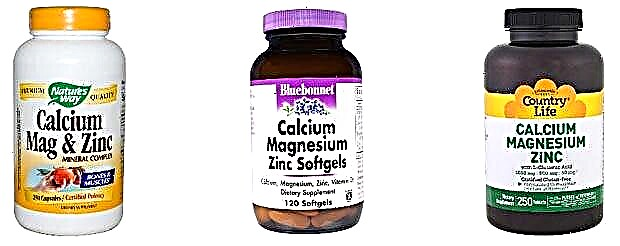Sports injuries
1K 1 20.04.2019 (last revised: 20.04.2019)
Vascular damage is a violation of the integrity of arterial and venous vessels under the influence of a traumatic agent. Observed with open and closed injuries. It may be accompanied by a violation of the blood supply to the lower segment, as well as external or internal bleeding.
Clinical signs of different types
The risk of vascular damage varies depending on the severity and type.
Symptoms of open injuries
Their main manifestation is external bleeding. If the vessel defect is covered by a blood clot or nearby tissues, there may be no blood loss.
A characteristic feature of such injuries is the spread of blood to soft tissues with the subsequent formation of bruises. With significant injuries, hemodynamic parameters deteriorate, and a state of shock may develop.
The most critical complications arise from trauma to large vessels and the development of arterial bleeding.
The severity of vascular damage in open injuries:
- violation of the integrity of the outer shell, while the inner layers are not damaged;
- through wound of the vessel wall;
- rupture of an arterial or venous vessel.
Symptoms of closed injuries
Closed vascular lesions are accompanied by destruction of the vessel intima. With injuries of mild severity caused by blunt objects, cracks form in the inner layer of the vessel. There is no bleeding outside. The danger lies in the possibility of the formation of an intravascular blood clot, which can provoke ischemia.

© Christoph Burgstedt - stock.adobe.com
A moderate condition suggests the presence of a circular rupture of the intima and part of the middle layer. Similar injuries occur in road traffic accidents, when an aneurysmal sac is formed in the area of the aortic isthmus as a result of a sharp blow.
Severe trauma is characterized by massive hemorrhages compressing nearby tissues.
Closed injuries are characterized by the following clinical manifestations:
- severe pain symptoms, which do not decrease under the action of analgesics and after bone reduction;
- lack of pulse in the arteries below the injury site;
- pallor or cyanosis of the skin;
- a bruise covering a large area.
Arteries
With damage to arterial vessels, the following clinical symptoms appear:
- a stream of scarlet blood;
- heavy bleeding;
- rapidly increasing hematoma with pulsation;
- no pulse below the injury;
- pale, and after bluish color of the skin;
- loss of sensitivity;
- pain sensations that do not change their intensity when palpating or fixing a limb;
- muscle rigidity, limited movement, turning into contracture.
Ven
A venous vessel injury is characterized by the presence of an even blood flow of a saturated dark color, edema of the limb, swelling of peripheral veins. Small hematomas are formed without pulsation. There are no manifestations of ischemia, the skin of the usual shade and temperature indicators, limb movements are not limited.
Head and neck vessels
Injuries associated with the risk of death due to:
- the close location of the airways and nerve plexuses;
- the risk of decreased brain nutrition due to stroke, thrombosis, ischemia;
- the presence of severe blood loss.
Rupture of an arterial vessel is accompanied by intense hemorrhage or pulsating hematoma located on the side of the neck. The bruise rapidly covers the supraclavicular region, puts pressure on the esophagus. Sometimes there is a breakthrough into the pleural cavity. This condition may be accompanied by damage to the vein.
Limbs
The manifestation of a ruptured vessel varies depending on the depth and size of the lesion. Since there are large trunks of arteries and veins in the limbs, gushing arterial bleeding is possible. This condition is a medical emergency.
Hemorrhage from the veins is less intense, but still requires medical attention. The most favorable outcome is damage to the capillaries. With normal blood clotting, an aseptic bandage should be applied to the victim.
Who heals
Therapy of vascular injuries, depending on the circumstances of their receipt, is within the competence of a traumatologist, military doctor or vascular surgeon.
First aid how to act
The primary concern when a bleeding injury occurs is to stop the blood loss. The amount of first aid depends on their severity and type:
- Hematoma. Application of a cold compress to the injury site.
- Rupture of small veins or capillary vessels. Applying a pressure bandage.
- Arterial. Pressing the injury site with a finger and applying a tourniquet over the clothes, under which a note should be fixed with the exact time. The maximum application time of the tourniquet should not exceed an hour for adults and 20 minutes for children.
The injured limb must be immobilized before the arrival of an ambulance. The victim should be in a horizontal position. For neck injuries, a rolled bandage must be applied to the wound.
Diagnostics
Recognition of the disease, its extent and location is based on data from diagnostic studies:
- Doppler ultrasound. Allows you to assess the condition of the walls and lumen of blood vessels.
- Serial angiography. Used to detect abnormal blood flow.
- Laboratory blood test. It can be used to diagnose blood loss and other complications.

© Yakobchuk Olena - stock.adobe.com
If a patient has a history of cardiovascular diseases, it is necessary to monitor the patient's well-being by a therapist or cardiologist. The presence of manifestations of aneurysm requires immediate medical attention.
Treatment
Upon admission to the department of traumatology or surgery, the following therapeutic measures are applied to the victim:
- stopping bleeding;
- emergency surgery;
- reconstructive surgery, helps to restore blood flow and return functionality to the main vessels;
- fasciotomy;
- excision of the affected area and autoplasty.









